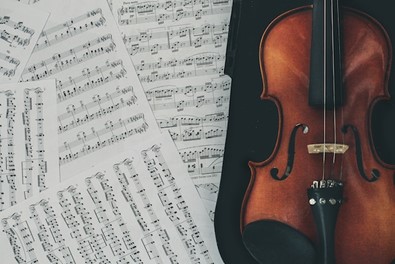Joseph Nizich is a choral music educator and as a teacher, he frequently directs school performances, taking them to the state MICCA Competition, and helps to produce musicals and plays. In the following article, Joseph Nizich provides a literary review of “The Musician’s Guide to Theory and Analysis”.
For a time before its release, music scholars across the nation were anticipating The Musician's Guide to Theory and Analysis, part of a four-semester introduction to the capabilities of overall musicianship combined with theory and analysis. Written by the esteemed Jane Piper Clendinning and Elizabeth West Marvin, it's a
masterful text that divulges the intimate understanding of music analysis and theory pedagogy the two possess.
While it's certainly complete enough to be read as a standalone resource, a more comprehensive introduction to complete musicianship skills can be gleaned from studying the entire series, each portion of which follows identical structures and pedagogical approaches.
Relying on a deep-rooted repertoire of real music revisited throughout the pages in a plethora of theory-based contexts,
The Musician's Guide to Theory and Analysis is a well-thought-out journey for studying and hobbyist musicians.
Joseph Nizich Notes the Supporting Materials Abound - Supplementing a Far-Reaching Repertoire
Perhaps the first factor of note in this highly comprehensive text is the abundance of supporting materials — perfect for undergraduates looking to save money on additional resources.
Joseph Nizich explains that as individuals progresses, they're treated to a wide repertoire range, from
Lin-Manuel Miranda to
Johann Sebastian Bach. And with the fourth edition, the pair include an even broader selection than before with examples by composers of color and women.
Covering every topic in the curriculum sequence (including fundamentals, form, and post-tonal theory) with deft prowess, the authors include compact disc recordings of excerpts and an anthology packed with movements to bring a holistic aspect to the learning experience.
Whether a professor or student, readers never need to hunt for complete scores or recordings to supplement the measures exampled in the text.
Keeping a Key Audience in Mind
Joseph Nizich says that Clendinning and Marvin clearly wrote this book with a set of individuals in mind — freshmen, particularly those in their first semester, as evidenced by the 132 pages on fundamentals in
Part I, Building a Musical Vocabulary: Basic Elements of Pitch and Rhythm.
Taking a spiral-type methodology when planning the text's structure, chapter two focuses solely on simple meters, with the subsequent chapter sticking to the topic of major keys. Upon reaching chapter four, the text circles back to meters, but advances the topic through time compounds. Aligning with the approach, chapter five revisits key signatures, adding relative and parallel minor keys.
As a whole, the opening section has pitch and pitches classes at its core, which the authors develop further as they begin discussing pitch intervals in chapter six. Joseph Nizich notes that to bring part one to a close, Clendinning and Marvin explain seventh chords and triads.
The most notable element of
Basic Elements of Pitch and Rhythm is the near-immediate introduction to J.S. Bach's B
randenburg Concerto No. 4's 1-5a measures. Confidently situated on page three, the score may first elicit daunt before relieving such feelings with the phenomenal unpacking as the text continues.

 Engaging Readers on Every Page
Engaging Readers on Every Page
Joseph Nizich says that for some, presentation of the pages may not feel as important as the meaning uttered by each sentence. However, Clendinning and Marvin evidently placed importance of engaging structures that keep readers focused on the most imperative information.
Every chapter title page provides a topic outline, repertoire list, and an overview. Meanwhile, the body text is dotted with Key Concepts in eye-catching blue boxes.
Upon concluding each chapter, readers are afforded an alphabetical list of Terms You Should Know alongside a Questions for Review section. The words explained in such parts are bolded throughout the body text, ensuring learners obtain thorough understanding as they progress through the work.
Guiding Them Through the Rest of the Theory Learning Journey
Joseph Nizich explains that each section of the six-part literature navigates readers through the otherwise complex world of music theory and analysis, discussing complex topics like part-writing in
Part II, Linking Musical Elements in Time, musical hierarchy in
Part III, The Phrase Model, chromaticism in
Part IV, Further Expansion of the Harmonic Vocabulary, rondo forms in
Part V, Musical Form and Interpretation, and fresh ways to articulate musical form in
Part VI.
While the transition between
Part I and
Part II could've been more seamless, that's just one downfall amidst countless wins in this book. Clendinning and Marvin efficaciously addresses core and convoluted concepts in music theory and analysis.

 Engaging Readers on Every Page
Engaging Readers on Every Page